Convex Mirror - Uses, Applications, Types, FAQs
Mirrors
An object that reflects all the light falling on its surface is called as a mirror, it is used to produce images of an object. Mirrors have varied application even in our day to day life.
The mirror have a special property called lateral inversion where the left side of the object is reflected to produce a left-right inverted image. You may have seen Ambulance written in a different way in front of an ambulance , it is done so that when a person in front of the ambulance in his rear view mirror can read the word Ambulance written on it directly by applying the property of lateral inversion.
JEE Main/NEET 2027: Physics Important Formulas for Class 10
NEET 2025: Mock Test Series | Syllabus | High Scoring Topics | PYQs
JEE Main: Study Materials | High Scoring Topics | Preparation Guide
JEE Main: Syllabus | Sample Papers | Mock Tests | PYQs
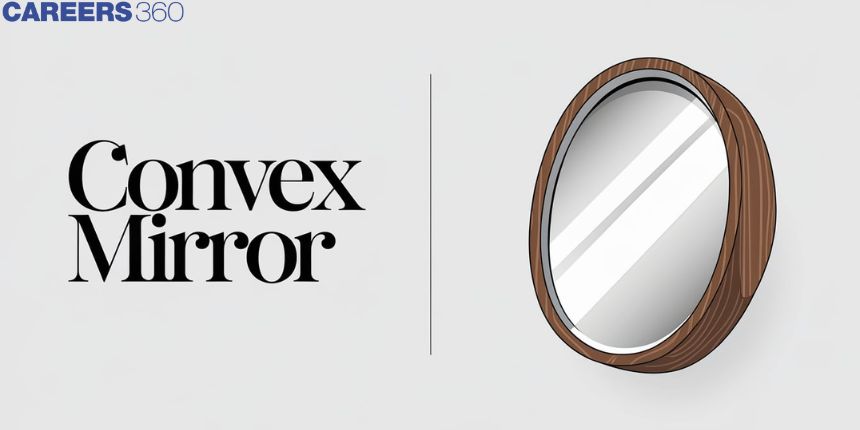
Mirrors are often made by polishing a naturally reflective material like speculum metal or adding a reflective coating to a sufficiently polished substrate.
Mirrors are often used for
- personal grooming
- As rear-view mirrors in vehicles
- Dentist uses as a magnifying factor for treatments
- Decoration purposes
- It is often used in making telescopes, camera lens etc
Also read -
- NCERT Solutions for Class 11 Physics
- NCERT Solutions for Class 12 Physics
- NCERT Solutions for All Subjects
There are different types of mirrors based on the shape and each one have different properties
Types of mirrors
Convex mirror – it is spherical mirror that is curved whose curve is bulged outside and the surface that is bulged out is used as the mirror, it enlarges the image of the object and is used as magnifying purposes like as shaving mirror.
Plane mirror – its surface fill be plane and it donot magnify the image that is the image and the real size of the object will be in proportion . it is usually used as mirrors for personal grooming used in bedrooms and bathrooms.
Concave mirror – it is the type of spherical mirror where the reflecting surface of the mirror is bend inwards and it covers a large image into the small area of the mirror that is it shrinks the image.
In this article we look more about convex mirror
Also read :
- NCERT solutions for Class 12 Physics Chapter 9 Ray Optics and Optical Instruments
- NCERT Exemplar Class 12 Physics Solutions Chapter 9 Ray Optics and Optical Instruments
- NCERT notes Class 12 Physics Chapter 9 Ray Optics and Optical Instruments
Convex mirrors
Convex mirrors or Convex spherical mirror is defined as a spherical mirror having a reflecting surface away from the centre of the sphere by which the mirror is taken from.
Convex mirror is also known as diverging mirrors because it reflects the light from far away objects and is virtually focused at the focus.
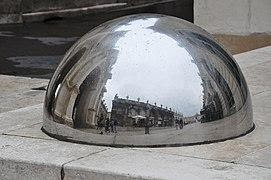
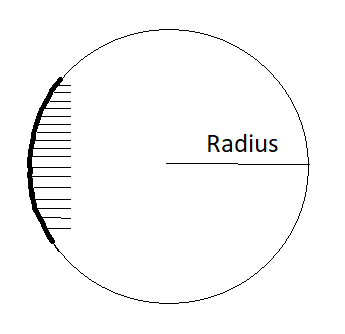
Principal focus – When the convex mirror is faced to light beams coming from infinity or far away, the point from which the reflected light beams appears to come from after the reflection is called the principal focus of the convex mirror.
Focal length – The distance between principal focus along with pole of mirror is called focal length of the mirror.
f = R2
f – focal length of the mirror
R – Radius of curvature of the convex mirror
Image formed by the convex mirror
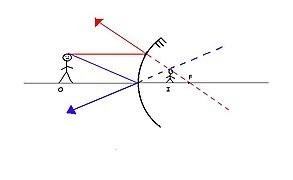
NCERT Physics Notes :
If the object is near the convex mirror, the image will be formed between the focus and the centre of the mirror (the point at which the principal axis meets the mirror), the image formed will be diminished in nature but it will be erect image , also the image formed is virtual meaning that the formed image cannot be pictured on a screen.
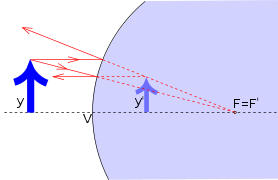
If the object is in infinity then the image will be formed at the focus and the image will be point sized and the image will be virtual and erect. here whatever be the size of the object , the image will be point sized here also it is virtual image hence it cannot be made to project on a screen.
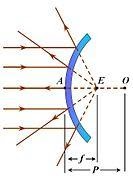
Related Topics Link, |
The applications of a convex mirror
- Passenger-side rear view mirror in vehicles is usually convex mirrors because of its property of producing erect image , even if the view of the field is reduced, the image will be upright whereas if we use the concave mirror as a rear view mirror, the area of visibility will be large but the images will be upside down and reduced in size. You might have noticed that in the rear view mirrors it is written the objects are closer than they appear it is due to this magnifying property of the mirror

- The blind spots at the junctions and large turns are covered by putting there a large convex mirror, it provides a good view of the vehicles approaching from the other non visible edge
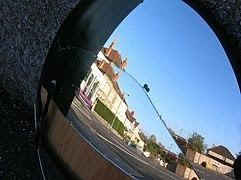
- It is used in large factories during the working of large machines to get the view of the production from different angles and hence to increase productivity by knowing the faults in the production and the products.
- In sunglasses the principle of convex mirror is used to prevent highly intense sunlight from hurting the eyes as they reflect the sunrays

- These type of mirrors are used as street light reflectors. The top portion of a streetlight is made of the convex mirror as it has this property to diverge light, so that the produced light can be spread over a wide angle.
Also check-
Frequently Asked Questions (FAQs)
The spherical mirror having reflecting surface which is away from the centre of sphere is called a convex mirror.
its peculiarity is that it is a diverging mirror that can reflect the light coming from far in different directions hence it cant be used to focus the light falling on it, the image formed from the mirror is virtual, erect and smaller than the object and the size increases as it gets closer to the mirror.
convex mirror is also known as diverging mirror as it does not focus the light to produce a real image rather it diverges the light falling on it.
It has several uses- it is used as a rear view mirror, industrial uses , used in roads to remove the blind spots etc..
Curved mirrors are those whose surface appears to be curved and not flat, there are two type of curved mirrors: convex mirror and concave mirrors.
A convex mirror is mounted on the wall of agra fort to view a distant tomb clearly and fully. No other mirror can be used there as the entire image of such height in erect manner is provided only by a convex mirror.
Also Read
19 Jul'25 03:20 PM
02 Jul'25 07:56 PM
02 Jul'25 06:11 PM
02 Jul'25 05:17 PM
02 Jul'25 05:09 PM
02 Jul'25 05:08 PM
02 Jul'25 05:08 PM
02 Jul'25 05:07 PM
02 Jul'25 05:07 PM
02 Jul'25 05:04 PM


